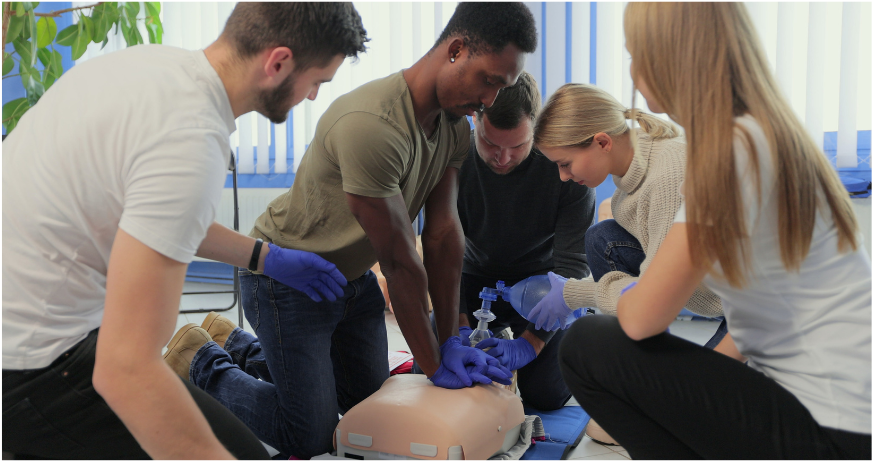How to build a strong educational institution? Here are some tried and tested tips.
Creating and running high-performance simulation centers is no easy feat. You must have a clear understanding of the local culture, learning style, and educational vision of the area or region your sim center serves to achieve success. Otherwise, your efforts could fall short. Thankfully, we are here to help. Take a look at these key tips for building a strong educational institution.

Youness Zidoun
Simulation Center Director and a researcher. Healthcare simulation expert with almost a decade of experience in this field with a Ph.D in Mobile Learning from Hassan II university of Casablanca. Consultant with many educational institutions and leading healthcare simulation industry, Dr. Youness helped design several simulation centers in different countries. He has a strong knowledge in healthcare simulation and computer science focused on technology integration in education, game-based learning, and artificial intelligence. he is the author of several scientific presentations and papers.
| 1. Build a diverse strong team Creating a successful healthcare simulation program requires a team of professionals with diverse abilities, skills, and experiences. The simulation team should include healthcare professionals, educators, and simulation technologists who can bring different perspectives to the program. In addition to their respective areas of expertise, team members’ diverse backgrounds can help ensure that the simulation program is well-rounded and capable of tackling a range of issues. A team that includes members from different cultures, genders, and ethnicities will bring unique perspectives and insights to the program. They help ensure that the simulation program is culturally sensitive and inclusive, making it more effective and engaging for a diverse range of learners. |
| 2. Collaborate with all your stakeholders Collaboration with stakeholders is essential for the success of a healthcare simulation program. Stakeholders might be healthcare providers, educators, administrators, and learners. Collaborating with these stakeholders will help ensure that the simulation program aligns with the needs and expectations, making it more relevant and engaging for them. Engaging stakeholders in the development and implementation of the simulation program can lead to an increase of the adoption and utilization of your program. When stakeholders are involved in the process, they are more likely to feel invested in your program’s success and will be more likely to participate in the simulation activities. |
| 3. Focus on your communication Effective communication is a vital component of healthcare simulation. It is necessary not only for the successful execution of simulation activities but also for providing effective patient care training. As a healthcare simulation team leader, it is our responsibility to emphasize the importance of clear and healthy communication among team members. Clear communication is necessary to ensure that team members understand their roles and responsibilities, leading to a more efficient and effective simulation experience. Offering training to help team members become more effective communicators will most certainly improve the overall quality of the simulation program. Techniques like active listening, and conflict resolution can be very helpful. |
| 4. Stay up to date with the latest technology and research Being on top of the simulation field requires a lot of research and lifelong learning. Both simulation technology and the healthcare sector are changing. To make a simulation program as realistic and productive as possible, it is crucial for directors to stay current with the most recent research and technology. Trends and best practices are continuously evolving; therefore, we must keep up with any new development to seek the best way to embed it in an efficient way. |
| 5. Foster a culture of innovation As a simulation director, it is essential to cultivate a culture of innovation and experimentation within our team. Encouraging team members to think outside the box and explore new ideas, technologies, and approaches to healthcare simulation can help keep the program fresh, engaging, and effective. Fostering an innovative culture can inspire the team to take risks and try new things, which can lead to exciting breakthroughs in simulation training. Additionally, it can help them stay engaged and motivated in their work by providing opportunities for creative problem-solving and experimentation. Team members should feel comfortable sharing their thoughts and suggestions. Resources and support should also be provided for team members to pursue innovative projects, such as training on new technologies or funding. |
| 6. Continuously evaluate and improve Evaluating the effectiveness of our simulation program is crucial to its success. The evaluation process should be ongoing effort that is designed to identify areas of strength and weakness and find ways to continuously improve them. As simulation directors, we should set clear goals and objectives for the program and regularly assess whether these goals are being met. Identifying areas for improvement will help us allocate resources more effectively and prioritize changes that will have the greatest impact. It can help demonstrate the program’s value to stakeholders as well. |
READ ALSO












































